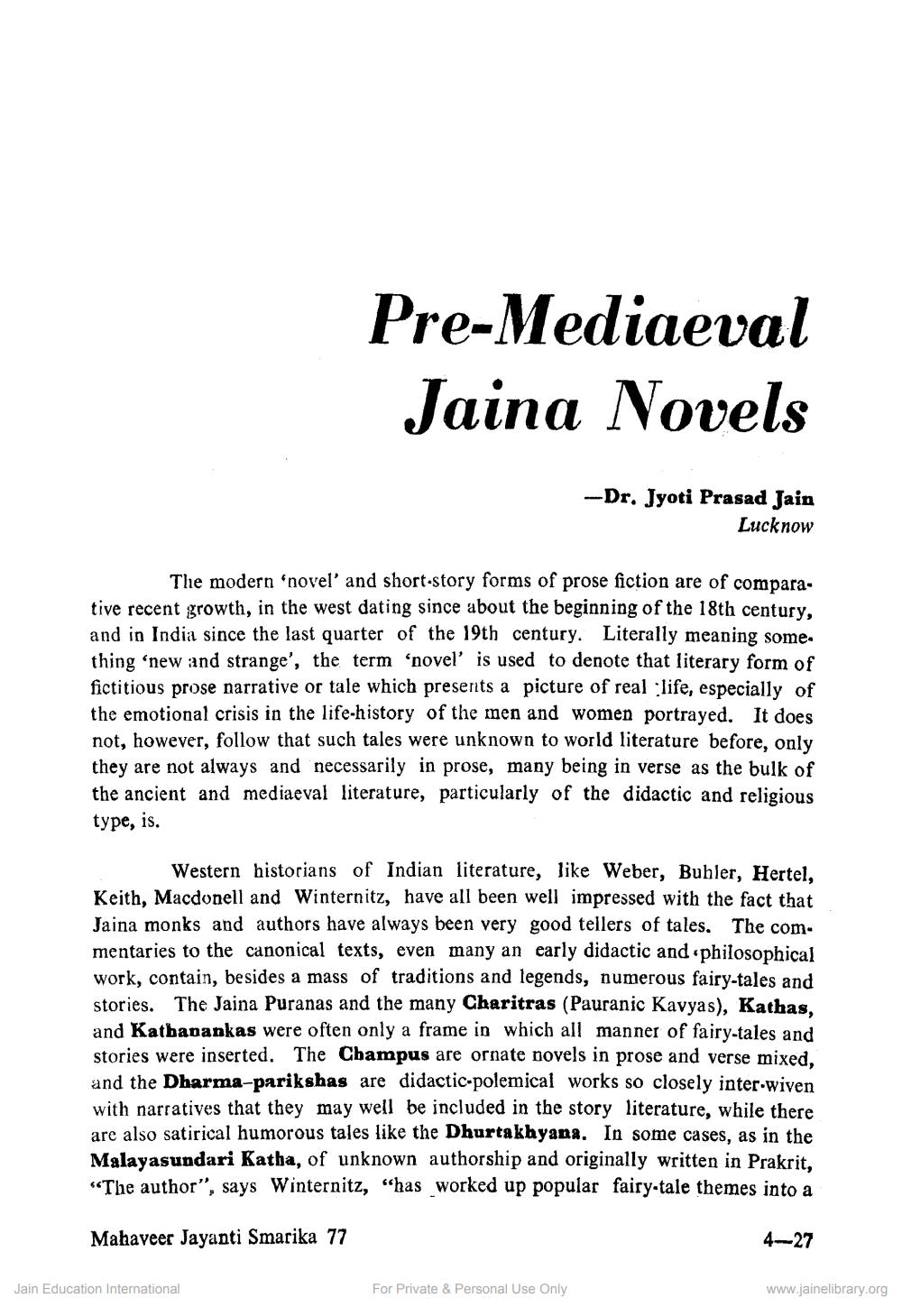________________
Pre-Mediaeval Jaina Novels
-Dr. Jyoti Prasad Jain
Lucknow
The modern ‘novel' and short-story forms of prose fiction are of comparative recent growth, in the west dating since about the beginning of the 18th century, and in India since the last quarter of the 19th century. Literally meaning some. thing 'new and strange', the term ‘novel' is used to denote that literary form of fictitious prose narrative or tale which presents a picture of real life, especially of
emotional crisis in the life-history of the men and women portrayed. It does not, however, follow that such tales were unknown to world literature before, only they are not always and necessarily in prose, many being in verse as the bulk of the ancient and mediaeval literature, particularly of the didactic and religious type, is.
Western historians of Indian literature, like Weber, Buhler, Hertel, Keith, Macdonell and Winternitz, have all been well impressed with the fact that Jaina monks and authors have always been very good tellers of tales. The commentaries to the canonical texts, even many an early didactic and philosophical work, contain, besides a mass of traditions and legends, numerous fairy-tales and stories. The Jaina Puranas and the many Charitras (Pauranic Kavyas), Kathas, and Kathapankas were often only a frame in which all manner of fairy-tales and stories were inserted. The Champus are ornate novels in prose and verse mixed. and the Dharma-parikshas are didactic-polemical works so closely inter-wiven with narratives that they may well be included in the story literature, while there are also satirical humorous tales like the Dhurtakhyana. In some cases, as in the Malayasundari Katha, of unknown authorship and originally written in Prakrit. “The author", says Winternitz, "has worked up popular fairy-tale themes into a
Mahaveer Jayanti Smarika 77
4--27
Jain Education International
For Private & Personal Use Only
www.jainelibrary.org




